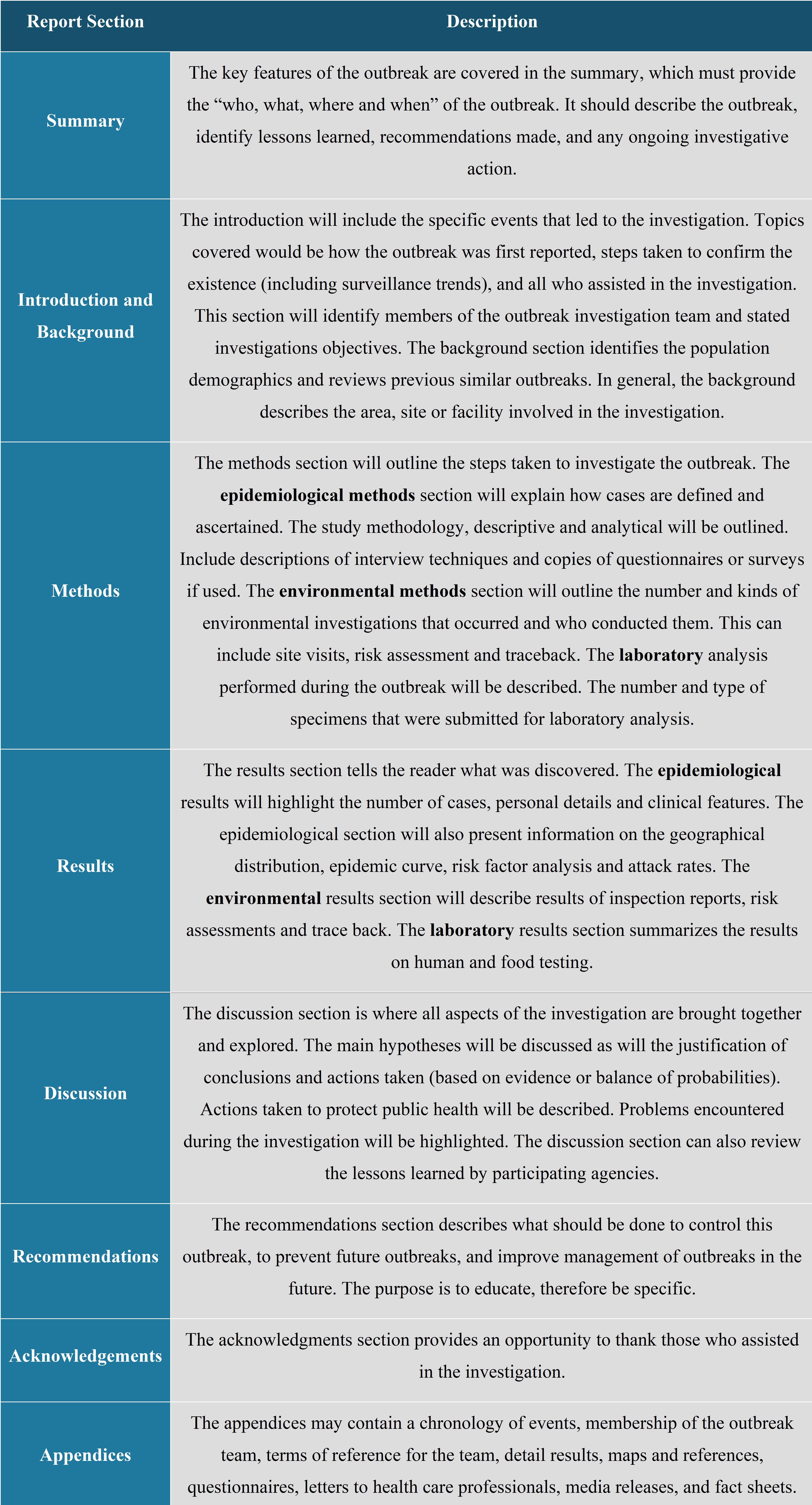Step 13: Communicate findings
Often the outbreak team is exhausted after an outbreak and when it is over, writing a final report is seen as "one last chore". There is also often a large volume of other work that has piled up since the investigation began. Hence the report may seem like a relatively non-important task. The main message is “be careful”. The report is the crucial documentation of events. Again, a team approach helps with writing.
Communication of findings usually takes two forms: oral briefing for local authorities and a written report.
1. An oral briefing for local authorities.
If the field investigator is responsible for the epidemiology but not disease control, then the oral briefing should be attended by the local health authorities and persons responsible for implementing control and prevention measures. Often these persons are not epidemiologists, so findings must be presented in clear and convincing fashion with appropriate and justifiable recommendations for action. This presentation is an opportunity for the investigators to describe what they did, what they found, and what they think should be done about it. They should present their findings in a scientifically objective fashion, and they should be able to defend their conclusions and recommendations (CDC, 2012).
2. A written report.
There are a variety of ways to compile the information obtained during an investigation into an understandable and useful document. The standard outline appears as follows:
Outbreak Investigation Report Format
- Summary
- Introduction and Background
- Methods
- Epidemiological
- Laboratory
- Environmental
Results
- Epidemiological
- Laboratory
- Environmental
- Discussion
- Recommendations
- Acknowledgments
- Appendices
All records related to the investigation must be retained, following agency guidelines for records management - but not all of that information belongs in a report! When preparing information for broad dissemination or an oral presentation, the maxim to follow is, “Don't tell them everything you know.” Of course, this does not mean that information should be deliberately hidden. Include important points in the report and be prepared to answer any questions with the details.

